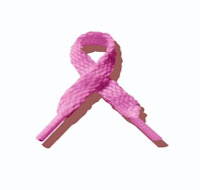 As many Physical Therapists already know, the medical establishment gets all the press. We have lived in their shadows for too long. Our potential to reduce costs to the healthcare system is so very limited by our lack of public awareness. The APTA seems to recognize this and does have a marketing initiative. The American Academy of Orthopaedic Manual Physical Therapists (AAOMPT) also acknowledges this and even has, as part of their mission: “The AAOMPT will be the resource for promoting orthopaedic manual physical therapy in the United States.”
As many Physical Therapists already know, the medical establishment gets all the press. We have lived in their shadows for too long. Our potential to reduce costs to the healthcare system is so very limited by our lack of public awareness. The APTA seems to recognize this and does have a marketing initiative. The American Academy of Orthopaedic Manual Physical Therapists (AAOMPT) also acknowledges this and even has, as part of their mission: “The AAOMPT will be the resource for promoting orthopaedic manual physical therapy in the United States.”
How have we done? Terrible in fact. Our efforts have been fractionated, we have no central funding source for this, the APTA does not have the budget to lead the way, and we are left to come up with trendy little media bits like Blackberry Thumb. But even that can be sabotaged by a crafty orthopaedic surgeon. By and large, consumers have no idea what good Physical Therapy is, nor that they can freely access our services.
On the other end of the spectrum is the well funded American Academy of Orthopaedic Surgeons. (AAOS) They have a wonderful marketing campaign which I hear every day as they have radio spots on the nationally broadcast ESPN radio!
At first glance, one might tend to wonder why orthopaedic surgeons need to market at all, as they already have control of the musculoskeletal healthcare marketplace. However, Microsoft advertises its product and so does Google. Reinforcing a solid market position is part of the good business practices of a leading organization.
Perhaps Physical Therapists can learn a thing or two from our well paid musculoskeletal brethren. Let’s take a look a the AAOS marketing campaign, powered in part by healthcare marketing powerhouse Priority Publications: (I encourage you to investigate the links below!)
*To start, the AAOS has a major marketing
focus on their website, including a media resource site for members.*The AAOS has a dedicated consumer
information website, orthoinfo.org, which is a far cry from the little button the APTA has
on their website for consumer
information.*The AAOS even has an awards program for their best member marketeers.
*The AAOS regularly…like every other
day…issues press releases to the AP and others for mass media distribution, like this one.*The AAOS has a celebrity spokesperson, in Joan Rivers!
*AAOS has a library of public service
announcements which are free to
members to use as they wish.*AAOS has a national radio and TV campaign
featuring their celebrity spokesperson.*The marketing goal of AAOS is:
“…will be recognized as the authoritative voice for good musculoskeletal
health” Click here for their strategic plan.
Summary: They have the same, albeit more detailed goal as the AAOMPT, a huge budget, a detailed national marketing campaign already in place, and the hold on the market already. Are we in trouble?
Well, there is a nice grassroots effort gaining momentum from the AAOMPT, the APTA has just hired a new CEO (whose background in stronger in lobbying than marketing,) and well, we might just invent a new marketing gimmick like we’ve done in the past. One problem with the AAOMPT’s goal is their ability to enact it. They represent only a smattering (read: small, tiny bit) of our nation’s Physical Therapists (although perhaps the most important smattering!).
My point is that grassroots efforts, while important, are a long way away from where we need to be. The Physical Therapy profession needs to organize their efforts or be left in the dust. We currently do not even come close to competing with the Ortho Marketing Juggernaut.
This national advertising topic is of great interest to me. As such, this post begins a series of posts I will present on ideas related to a national marketing campaign for Physical Therapy: PT Publicity Project. Enjoy and comment when you feel inspired to!



